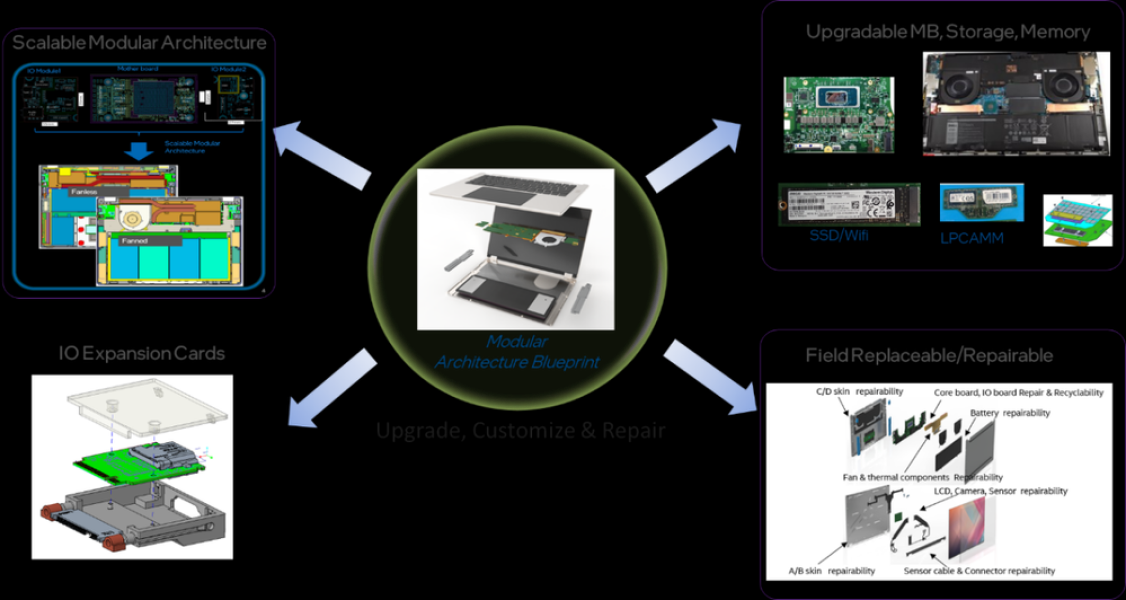
(Image credit: Witthaya Prasongsin/Getty Images)
Intel engineers hope that new reference designs for modular computers could lead to laptops and mini-PCs that are easy to repair and help reduce electronic waste.
A major manufacturer has shown off its plans to develop a new PC architecture for laptops that relies on a motherboard that is divided into multiple modules — including the main motherboard and separate I/O modules to handle things like connectivity. This is different from the traditional all-in-one design found in most laptops. The engineers revealed their designs in a blog post on January 22.
Breaking down a standard motherboard into multiple components creates a scalable design that allows components to be reused across laptops of different sizes and form factors. This modular approach allows faulty motherboard components to be replaced without replacing the entire motherboard. Using a standardized modular design also offers laptop manufacturers the opportunity to reduce manufacturing costs and waste.
“By creating a new approach to system design that makes components easy to upgrade and replace, we aim to significantly extend the life of computing devices, thereby reducing e-waste and promoting more sustainable consumption patterns,” three Intel officials wrote in a blog post.

Intel is completely rethinking the concept of modular laptops. Modular steps
The idea behind modular laptops is that if any component fails or needs to be upgraded, the user or a qualified technician can easily replace it without having to change other parts of the device or return it to the factory.
This affected some components of the Panasonic ToughBook and Framework Laptop 13 laptops, a highly modular device whose design allows for multiple components to be replaced and also provides accessibility to hardware that is not glued down, unlike laptops from other brands.
However, this modularity is still far from standardization. Unfortunately, while there are good options on our list of the best laptops for programming and students, many of them do not have upgradeable components or have them in limited quantities. In the event of a breakdown, specialized repairs are often required.
Intel’s Modular Architecture Blueprint aims to change that by taking modularity further than Framework notebooks and providing a reference design that considers modularity from manufacturing to field repairs and user upgrades. Additionally, easily replaceable memory, storage, and Wi-Fi components—still uncommon in mainstream notebooks—could enable a notebook design that facilitates greater customization for OEMs, but doesn’t prevent DIY repairs.
Intel is also keen
Sourse: www.livescience.com





